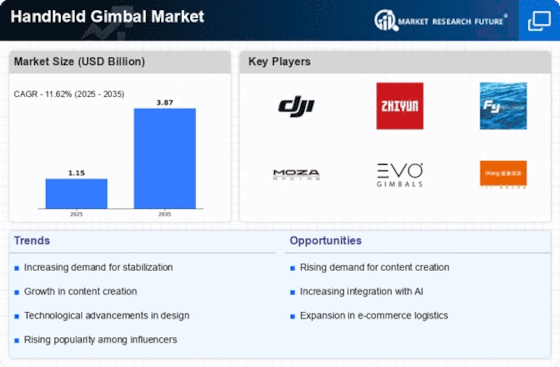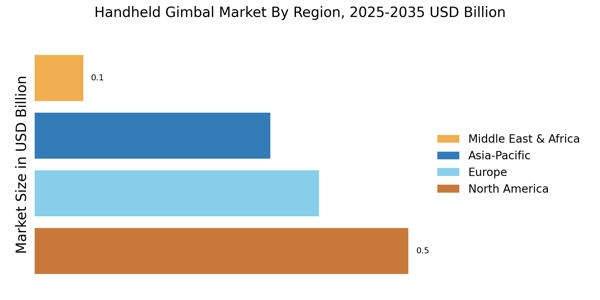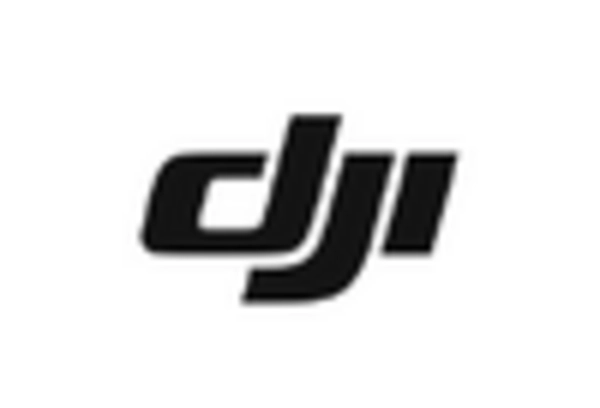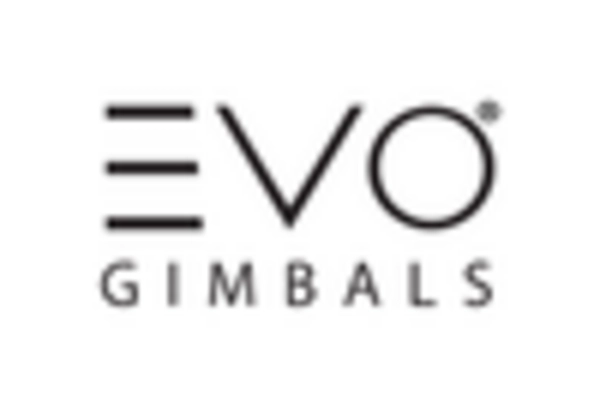Rise of Mobile Content Creation
The Handheld Gimbal Market is significantly influenced by the rise of mobile content creation. With the proliferation of smartphones equipped with high-resolution cameras, more individuals are engaging in video production for social media platforms. This trend has led to an increased demand for handheld gimbals, which provide the necessary stabilization for professional-looking videos. As of October 2025, it is estimated that over 70% of content creators utilize gimbals to enhance their video quality. This shift towards mobile videography is not only transforming personal content creation but also impacting marketing strategies for brands, as they increasingly rely on user-generated content to engage audiences.
Expansion of E-commerce Platforms
The Handheld Gimbal Market is benefiting from the expansion of e-commerce platforms, which facilitate easier access to a variety of gimbal products. As online shopping continues to grow, consumers are increasingly turning to e-commerce for purchasing gimbals, allowing for a wider selection and competitive pricing. As of October 2025, it is reported that online sales account for nearly 60% of total gimbal sales, reflecting a shift in consumer purchasing behavior. This trend is likely to persist, as e-commerce platforms enhance their offerings with detailed product descriptions, customer reviews, and comparison tools, making it easier for consumers to make informed decisions.
Increased Demand for User-Friendly Designs
The Handheld Gimbal Market is witnessing a growing demand for user-friendly designs that cater to both amateur and professional users. Manufacturers are focusing on creating intuitive interfaces and lightweight structures that enhance portability and ease of use. As of October 2025, the market has seen a notable increase in sales of gimbals that feature simplified controls and ergonomic designs, appealing to a broader audience. This trend is particularly relevant as more individuals venture into video production without extensive technical knowledge. The emphasis on user-friendly designs is likely to continue, as it aligns with the increasing desire for accessible technology in the creative industry.
Technological Advancements in Stabilization
The Handheld Gimbal Market is experiencing a surge in technological advancements, particularly in stabilization technology. Innovations such as 3-axis stabilization systems have become increasingly prevalent, allowing for smoother video capture even in dynamic environments. This has led to a rise in demand among content creators and filmmakers who seek high-quality footage without the need for extensive post-production editing. As of October 2025, the market is projected to grow at a compound annual growth rate of approximately 10%, driven by these advancements. Furthermore, the integration of artificial intelligence in gimbals enhances user experience by providing features like automatic tracking and scene recognition, which are becoming essential for modern videography.
Growth in the Film and Entertainment Industry
The Handheld Gimbal Market is closely tied to the growth of the film and entertainment sector, which continues to expand due to increasing content consumption across various platforms. As of October 2025, the demand for high-quality video production in films, television, and online streaming services has led to a heightened need for advanced stabilization equipment. Filmmakers are increasingly adopting handheld gimbals to achieve cinematic shots without the bulk of traditional equipment. This trend is expected to drive market growth, as the entertainment industry seeks innovative solutions to enhance production quality and meet audience expectations.

















Leave a Comment